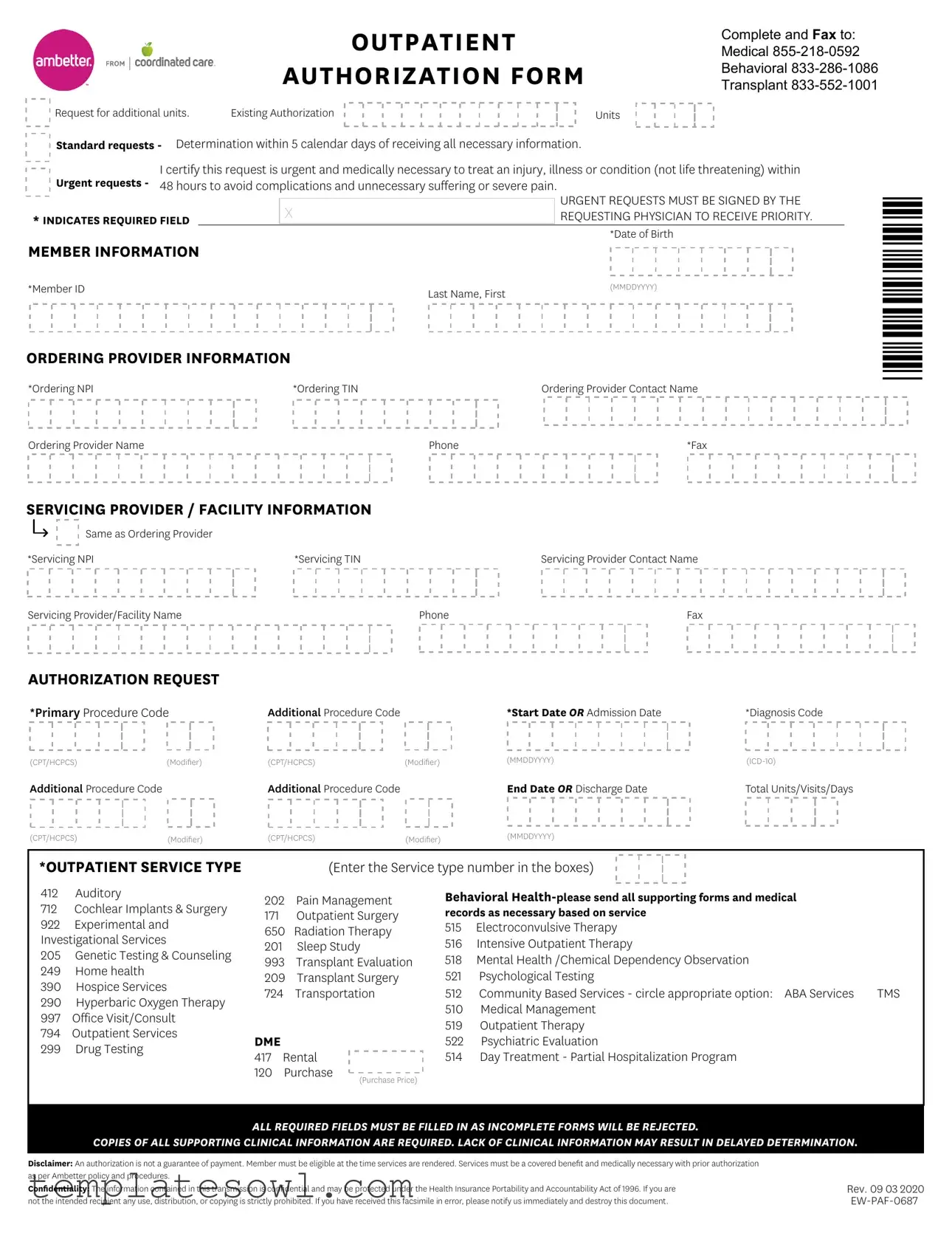What is the purpose of the Ambetter Outpatient Authorization Form?
The Ambetter Outpatient Authorization Form is used to request prior authorization for outpatient healthcare services. This form ensures that the requested services are covered benefits and medically necessary according to Ambetter policies. It helps providers obtain approval before delivering certain treatments, ensuring that patients receive the appropriate care without unexpected costs.
How do I submit the Ambetter Outpatient Authorization Form?
You can complete the form and fax it to the appropriate number based on the type of service being requested. For medical services, use fax number 855-218-0592. For behavioral health services, the fax number is 833-286-1086. If the authorization is for transplant services, fax to 833-552-1001. Make sure all necessary fields are completed to avoid delays.
What information is required on the form?
The form requires several pieces of information, including the member's full name, date of birth, and member ID. Additionally, you will need details about the ordering provider, such as their NPI and contact information, as well as servicing provider details. Several clinical specifics are also necessary, including procedure codes, diagnosis codes, start or admission dates, and the total number of units or days needed for the service.
What happens if I submit an incomplete form?
Submitting an incomplete form may result in rejection of the authorization request. It is essential to fill out all required fields accurately and provide copies of supporting clinical information. Insufficient information can cause significant delays in processing the request, potentially affecting the patient's care.
How long does it take to get a determination?
The determination time depends on the urgency of the request. Standard requests are typically processed within five calendar days after all necessary information is received. Urgent requests, which must be marked as such and signed by a healthcare provider, are processed within 48 hours to avoid complications or significant pain for the patient.
What does it mean if a request is marked as urgent?
An urgent request is one that is medically necessary but not life-threatening. This means that prompt treatment is needed to prevent complications, unnecessary suffering, or severe pain. It is critical that the healthcare provider certifies the request's urgency to ensure expedited review by Ambetter.
Does authorization guarantee payment for services?
No, obtaining authorization does not guarantee payment. It is essential for the member to be eligible for coverage at the time the services are rendered. The services requested must also align with covered benefits and be determined as medically necessary according to Ambetter's policies.
How should confidential patient information be handled when submitting the form?
Confidentiality is paramount. The information included in the Ambetter Outpatient Authorization Form may be protected under the Health Insurance Portability and Accountability Act (HIPAA). Therefore, it's crucial to ensure that the form is transmitted securely. If the form is received in error, the unauthorized recipient should immediately notify the sender and destroy the document to protect the confidentiality of sensitive patient information.
What if I need help filling out the form?
If assistance is needed when filling out the Ambetter Outpatient Authorization Form, it is advisable to contact Ambetter customer service or consult with the healthcare provider’s administrative office. They can provide guidance on completing the form accurately and ensuring that all necessary information is submitted for a smooth authorization process.

